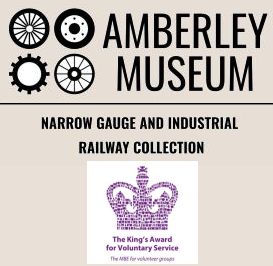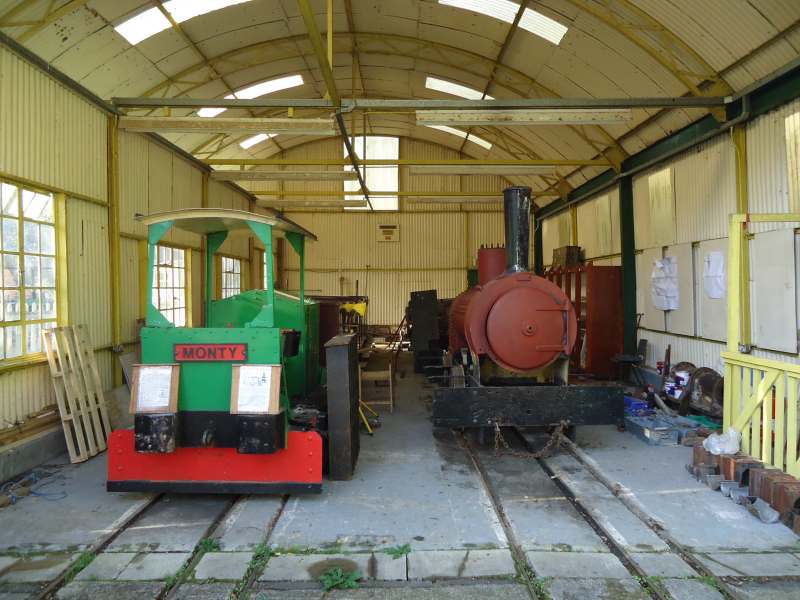

|
October 2010
A new project, being undertaken by some of our younger volunteers, has now been initiated to restore the Fletcher Jennings 3ft 2¼in gauge locomotive, Townsend Hook, to an exhibitable standard. Some preventative work was done by one of our older volunteers and the tanks and boiler were given a coat of red oxide to prevent further deterioration and now we have started the cosmetic restoration of our eldest locomotive.
Hopes that this work could have been done several years ago were high when a college in Hampshire offered to take on the task as a project for a group of engineering students. The locomotive was therefore taken to the college and dismantled. Some work was undertaken - new axle boxes were even cast as part of this work. Sadly, a change in the curriculum at the college meant that the work was not progressed and the loco was therefore returned, in pieces, to the Museum.

Betchworth Hall - the large corrugated shed next to Brockham Station was originally intended to become the home of our collection of items from the Dorking Greystone & Lime Company's quarries at Betchworth, near Dorking in Surrey. Unfortunately, pressure on our limited workshop space has meant that this intention had to be put aside and the building became an extension to our workshops and much useful work has been done there, but to the detriment of the Betchworth exhibits. This is, hopefully, about to change. On the right is the Fletcher Jennings 0-4-0T locomotive, Townend Hook, built in 1880. It is our oldest locomotive by some 25 years (except for the Hampshire Narrow Gauge Railway Trust's "Cloister" which is currently housed at the Museum). There was a second locomotive, William Findlay, to the same design which is preserved also. As can be seen, some work on protecting the boiler had already been done. On the left is one of the diesel locomotives acquired by the company named "Monty", an Orenstein & Koppel single cylinder loco.
Close-up of a very sad looking Townsend Hook with basically the frames, wheels and boiler being the only pieces actually attached to the locomotive. Temporary wooden axle boxes are fitted to enable us to move the chassis around when needs be.
In mid-October, the Museum's crane was used to lift the boiler off the frames so that work could be undertaken on the frames and the motion refitted.
Everyone stood clear although we had every confidence in Frank Glue at the controls.
It was decided that the boiler would be placed on the small area of concrete outside the tunnel. Gradual progress into this postion was soon achieved.
Many hands make light work, but this wasn't needed as the sun was shining so these hands were instead used to steady the boiler as it was lowered into position.
Gently does it, as a number of sleepers were arranged to support the boiler.
And there we are. The boiler has now been sheeted over to protect it from the winter weather. It is NOT our intention at the present time to restore Townsend Hook to working order. The limited use to which we could put the loco makes the full restoration an uneconomical proposition. However, the work we are planning will secure the fabric of this important exhibit for future generations to enjoy.
Work continued over the winter period and into Spring. The chassis was reunited with its wheels in May and rolled out of the shed with the help of No.12 (HE8969) on Sunday 12 June, in good time for Gala Weekend when Betchworth Hall has to be emptied to accommodate the visiting live steam layout. |
